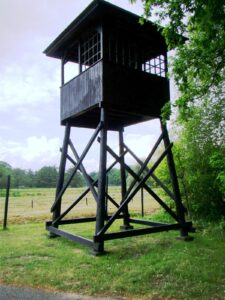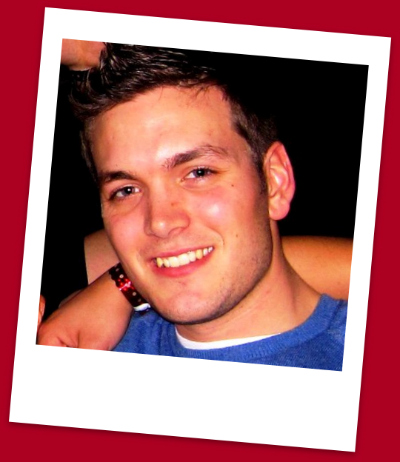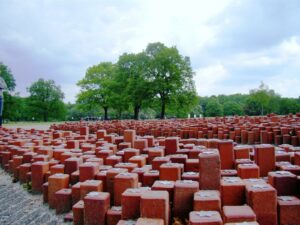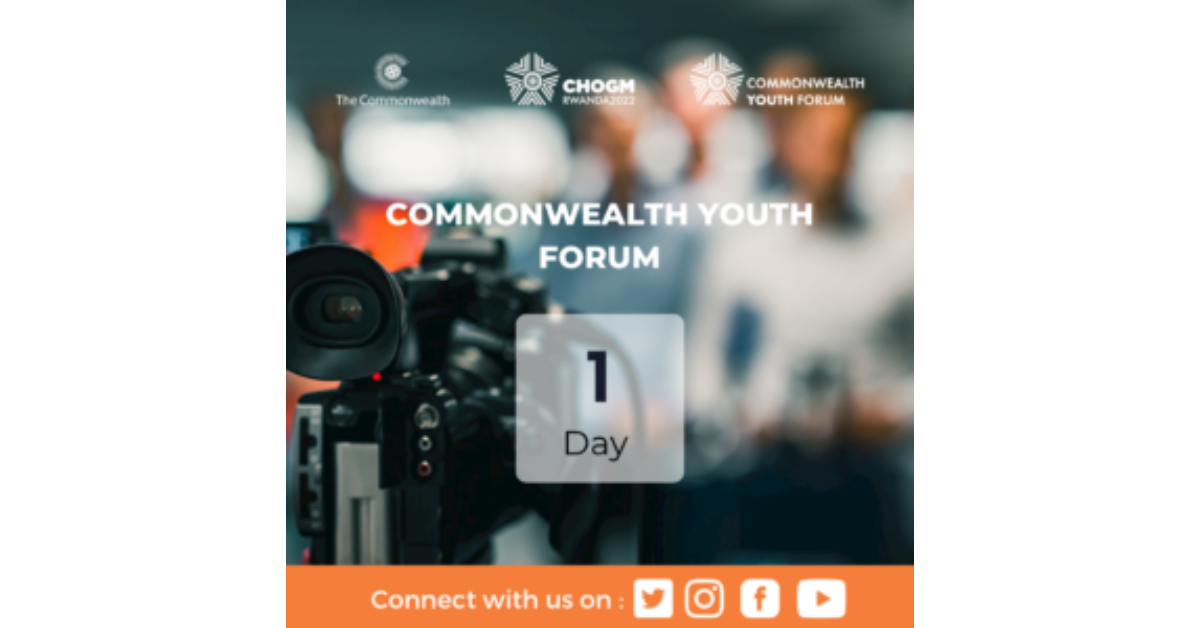"An all too grim reminder of this darkest chapter of history"
December 3 A visit to a national monument in the Netherlands where in World War Two more than a hundred thousand Jews were forced onto wagons to be taken to death camps in Germany and Poland proves to be a sobering experience for Gys Weverink, 24, a Commonwealth Correspondent from Ottawa, Canada.
A visit to a national monument in the Netherlands where in World War Two more than a hundred thousand Jews were forced onto wagons to be taken to death camps in Germany and Poland proves to be a sobering experience for Gys Weverink, 24, a Commonwealth Correspondent from Ottawa, Canada.
As many campus clubs and awareness initiatives spring to action all across Canada to educate local communities about the Holocaust – perpetuated by Nazi Germany during the Second World War – and its lasting scars on the global Jewish population, as well as the world as a whole, I feel compelled to write the following piece.
This past spring, I was fortunate enough to spend two weeks back in my birth nation, the Netherlands. During these two weeks, the weather gods favoured that little country, as the sun was plentiful, the temperatures pleasant, and rain a rarity—something not traditionally associated with Dutch springs if my childhood memories serve me correctly.
I was fortunate enough to be able to take in Queens Day in Amsterdam, the lovely canals, squares and architecture of the country’s old cities, and bicycle past the governmental and juridical commotion of The Hague to the breezy, commercial seaside town of Scheveningen, only minutes away.
However, the day that will remain with me the longest was one of the last. The Thursday prior to my return to Canada, I visited the site of former WWII durchgangslager (transit camp) Westerbork, in the northeast province of Drenthe. From within the barbed wire fences of Westerbork, 107,000 Jews forcibly boarded cattle wagons heading further east into Europe, to the extermination camps of Sobibor, Mauthausen, Bergen-Belsen, Auschwitz and Theresienstadt.
Walking through the peaceful forests surrounding the camp it is nearly impossible to fathom that this area was the site of so much human despair only some sixty years ago. As we exited the peaceful calm of the tall forests surrounding the camp, however, the grim reality of the atrocities of the Holocaust are immediately within sight.
A monument, entitled “Signs of Westerbork”, consisting of five concrete coffins bearing the names of Sobibor, Mauthausen, Bergen-Belsen, Auschwitz and Theresienstadt, as well as the number of deported and murdered Jews, Roma and political prisoners. These camps proved to be a final destination for many of Westerbork’s inhabitants. Of the 107,000 prisoners deported from Westerbork, 102,000 were murdered. This sobering monument was the initiative of Jules Schelvis, one of only eighteen Dutch Sobibor survivors.
 Although the camp gained notoriety for its role under Nazi command in the Second World War, the Nazis did not in fact construct the camp. In a bitter irony, the Dutch government ordered the construction of the camp prior to the Nazi invasion in order to be able to provide a central refugee camp for the large numbers of Jews fleeing Germany, as life became increasingly unbearable under Hitler’s Nazi rule during the late 1930s.
Although the camp gained notoriety for its role under Nazi command in the Second World War, the Nazis did not in fact construct the camp. In a bitter irony, the Dutch government ordered the construction of the camp prior to the Nazi invasion in order to be able to provide a central refugee camp for the large numbers of Jews fleeing Germany, as life became increasingly unbearable under Hitler’s Nazi rule during the late 1930s.
The camp’s monuments and replicated skeletal remains serve as another stark reminder that history’s single largest atrocity deeply scarred the Dutch social fibre, as well as its physical landscape. The decimation of the once thriving Jewish communities in the Netherlands is an all too grim reminder of this darkest chapter of twentieth century history. Walking along the grim, meticulously planned and constructed paths, the anguish and despair felt by its former inhabitants was palpable. It emanated from the ground and crawled up through the bones of my feet, rising further with each footstep.
It began to rain, as the skies drew dark, blackening as the weather turned gloomy and cold. The change of weather reflected my internal emotional state. Sadness slowly consumes my body as I trudged along, numbed by the reality of the element of a chain of organized genocide my surroundings once represented. Entering the camp’s belly along the main path, which traces the former railway line’s trajectory—I translate the numerous enlarged farewell letters that stand alongside.
 They consist of hope-filled letters to loved ones, brimming with optimism; thank you notes to family members, neighbours, and friends; farewells to distant acquaintances. Humanity flows forth on these enlarged pages, yellowed by time. One particularly gripping letter from a young woman to her best friend and fiancée really grips me.
They consist of hope-filled letters to loved ones, brimming with optimism; thank you notes to family members, neighbours, and friends; farewells to distant acquaintances. Humanity flows forth on these enlarged pages, yellowed by time. One particularly gripping letter from a young woman to her best friend and fiancée really grips me.
It hits me that the only difference between these two loving couples, and ultimately the difference between life and death during these times were the ethnic origins of the couples, and the illusory doctrine of racial superiority embraced by Nazi Germany, resulting in the unnecessary murder of so many millions.
Some sixty-six years removed from the last of this particular horrendous chapter of terror in human history, hatred and intolerance still remain globally prevalent. Genocide and ethnic cleansing still remain a contemporary reality rather than an aspect of human brutality reduced to the annals of history. History matters—especially such horrific elements of history such as the Holocaust. Not for the sake of glorification, but rather for the important lessons they teach future generations.
Events such as Holocaust Education week and similar initiatives exist not to establish political or ideological sides in the complex socio- and geopolitical issue that is the Israeli-Palestinian conflict; they exist because they represent humankind at its worst. Horrors such as this transcend all ideological and political boundaries, or at least they should.
The lessons remain of significance because intolerance, ignorance, and baseless hatred persist in today’s world. The terrible suffering of millions of Jews, Roma, and other ethnic and social minorities ought to teach humankind about the destructive powers of hatred and ignorance. Unfortunately, it appears as if this has not fully sunk in.
…………………………………………………………………………………………………………………

About me:
“I am studying political science and African studies at Carleton University in Ottawa, Canada. Born in the Netherlands, my family and I moved to rural Ontario in 1999, when I was 12-years-old. When I am not busy with my study, or working away in the summer, I am likely either in pursuit of the perfect cup of coffee or somewhere in the shade attempting to tackle my ever growing reading list.
“Upon completing my undergraduate degree, I hope to complete a masters at the African Studies Institute in Leiden, the Netherlands, and hopefully take the culmination of my study efforts to the continent which has always fascinated and intrigued me.”
…………………………………………………………………………………………………………………
Opinions expressed in this article are those of the author and do not necessarily represent the views of the Commonwealth Youth Programme. Articles are published in a spirit of dialogue, respect and understanding. If you disagree, why not submit a response?
To learn more about becoming a Commonwealth Correspondent please visit: http://www.yourcommonwealth.org/submit-articles/commonwealthcorrespondents/
…………………………………………………………………………………………………………………



